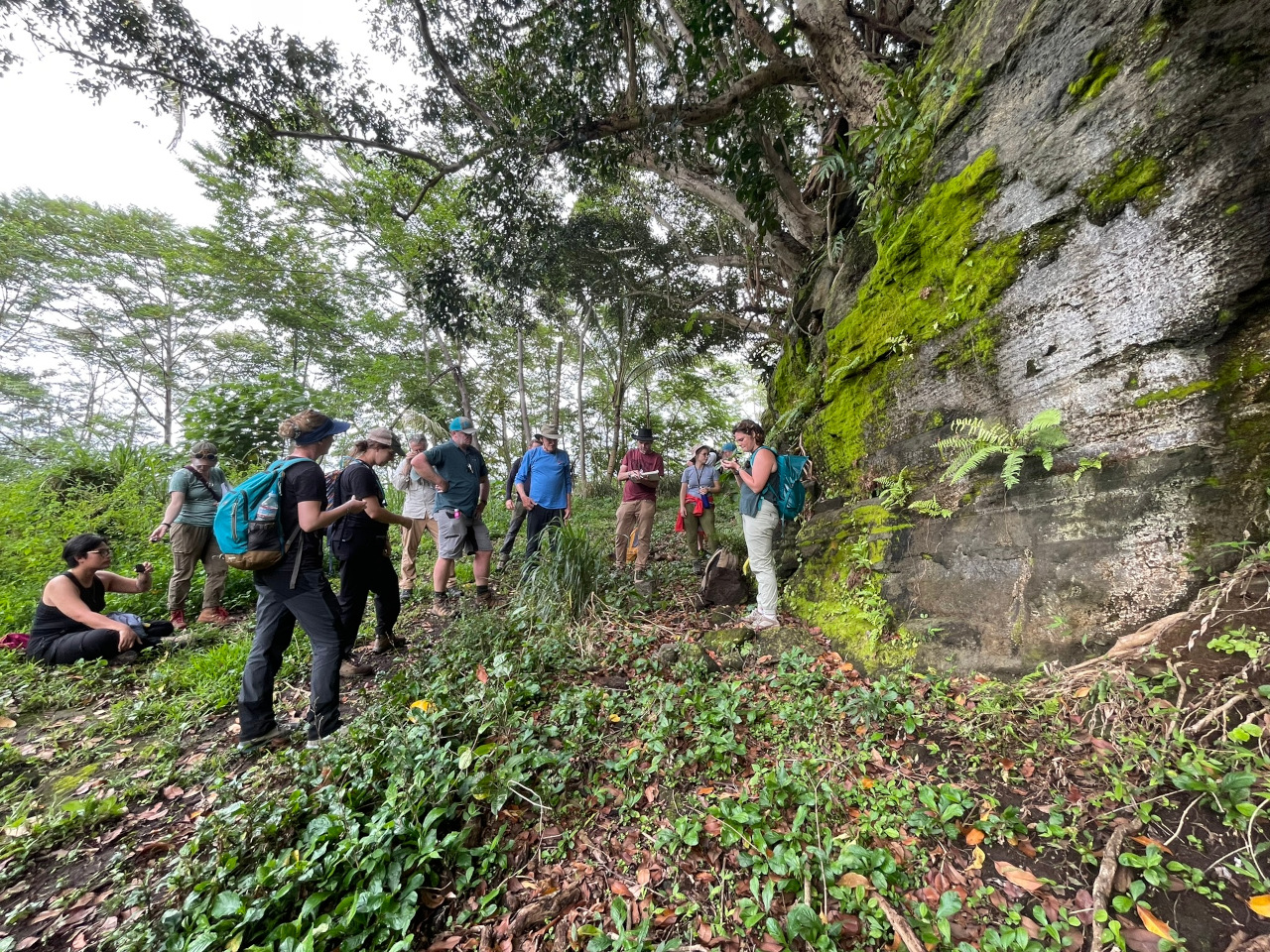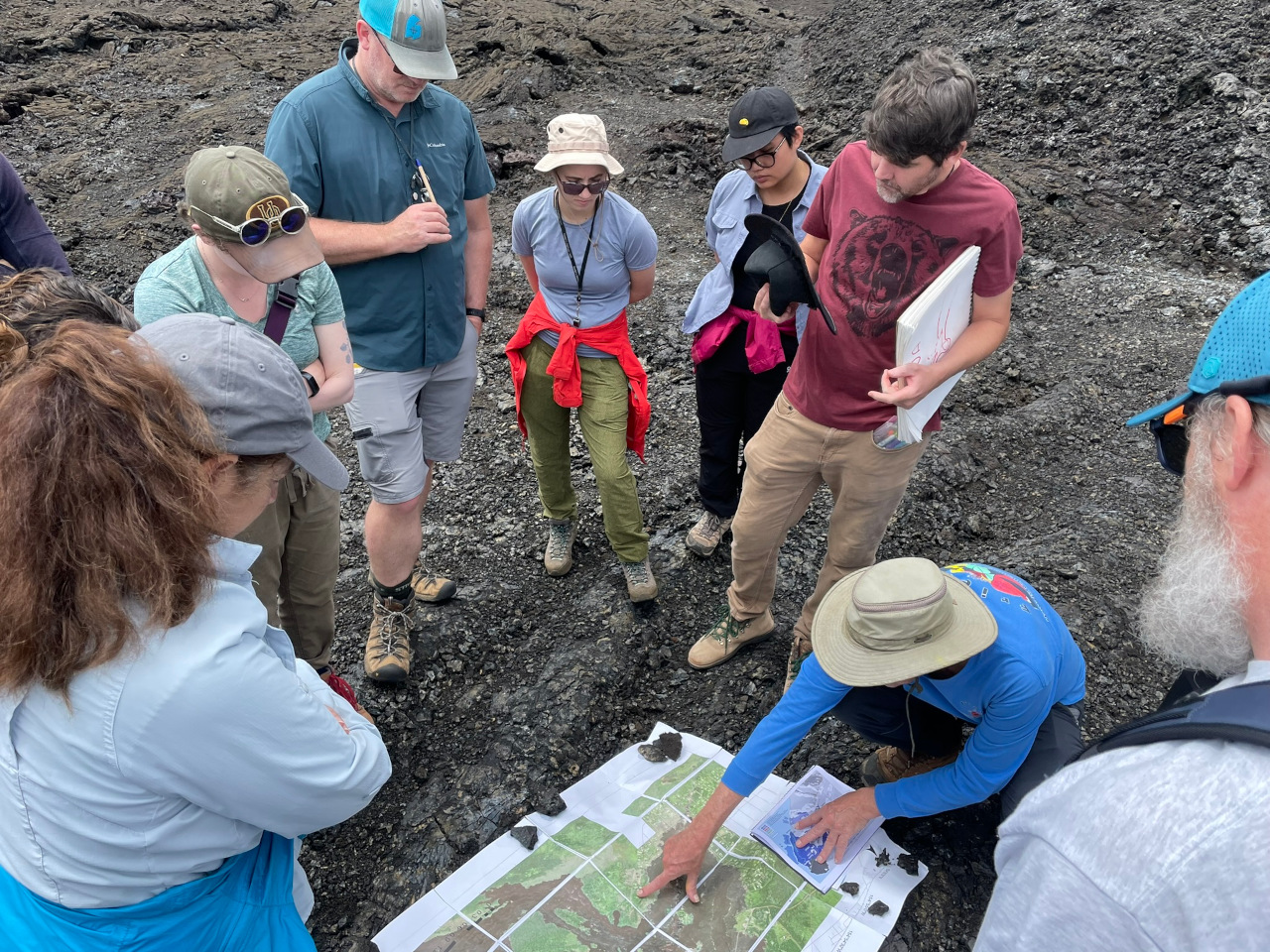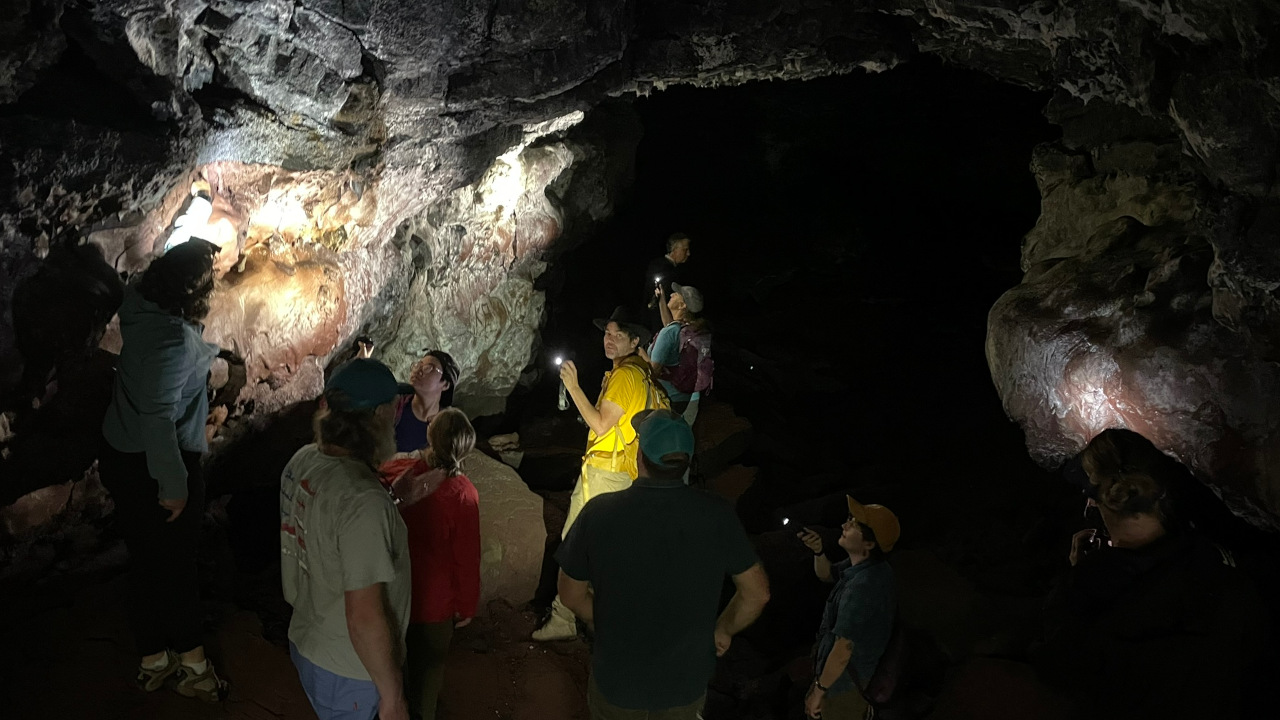
USGS: “Participants of the May 2024 Kīlauea petrology workshop observe an outcrop of tephra near Kapoho cone, located on the lower East Rift Zone of Kīlauea. Tephra is a word that describes volcanic particles that are ejected out of an erupting vent, which travel through the air before being deposited on the ground.” (USGS photo by A. Lerner)
(BIVN) – Kīlauea is not erupting and the USGS Volcano Alert Level remains at ADVISORY.
Scientists reported in their most recent update that “earthquake counts and rates of inflationary ground deformation in the summit and upper rift zones continue the slightly elevated behavior since the end of the June 3 eruption.”
In the latest Volcano Watch article, the USGS Hawaiian Volcano Observatory provides an account of a recent meeting of volcano geochemists and petrologists.
From this week’s article, written by University of Hawaiʻi at Mānoa graduate student Rose Gallo:
During the most active portion of their life cycle, called the shield stage, Hawaiian volcanoes erupt frequently and mostly produce a rock type called basalt. Basaltic lava flows formed during the shield stage make up the majority of the rock of the Hawaiian Islands. Kīlauea, one of the world’s most active volcanoes, is a modern example of a volcano in the shield-building stage.
Kīlauea primarily erupts basaltic lava flows during its frequent eruptions, such as the most recent brief eruption on June 3, 2024. In addition to being dominantly basalts, Kīlauea’s lavas are limited in their chemical makeup by a consistent and predictable pattern of mineral formation. Magmas entering the volcano deep beneath the surface have a narrow range of chemical compositions; with time, those compositions change cyclically. As magma is stored, first in the magma reservoirs beneath the summit caldera, and sometimes later in smaller magma reservoirs beneath the volcano’s rift zones, it cools and minerals begin to form.
Minerals—such as olivine, plagioclase, and pyroxenes—form from elements in the magma. The quantities of each element are relatively fixed as part of the mineral’s structure. When the minerals form, they deplete those elements from the remaining magma. Formation of the same minerals in the same order under similar conditions of temperature and pressure results in the generation of very similar magmas over time in Kīlauea’s magma chambers.
The consistent nature of lava chemistry at Kīlauea both helps and hinders us in understanding the volcano’s behavior. The predictability and limited range of magma compositions at Kīlauea allows for reliable forecasting of the style of future eruptions, and thus the associated hazards, compared to most other volcanoes.
The consistent pattern of chemical changes in Kīlauea’s magmas also provides a robust data set to validate tools designed to simulate the chemical behavior of magma. However, distinguishing between the deposits of past eruptions can be very difficult because of the limited variability in lava flow compositions. It can be challenging to answer questions such as: How many eruptions produced a particular set of lava flows? Did two lava flows formed at different times come from the same magma reservoir?

USGS: “Participants of the May 2024 Kīlauea petrology workshop discuss the local geology near lava flows that erupted during the lower East Rift Zone eruption of Kīlauea in 2018.” (USGS photo by A. Lerner)
In May of this year, a group of volcano geochemists and petrologists (scientists who study the chemistry, textures, and origins of volcanic rocks) met in Hilo to discuss how to improve our understanding of magma storage and evolution at Kīlauea with these considerations in mind. The meeting, organized by Dr. Tom Shea from University of Hawaiʻi at Mānoa included USGS scientists as well as professors and graduate students from Hawaii, Oregon, Washington, and France.
Participants shared information on the current state of knowledge at Kīlauea and about potentially useful techniques for chemical analysis of Kīlauea rocks. Some of the topics of the meeting included: 1) discussing how chemical elements that occur at very low concentrations in the earth could be used to identify similarities and differences between lavas, 2) comparing several types of scientific software used to model the pattern of lava compositions observed at Kīlauea and considering needed improvements, and 3) sharing methods for using the concentrations of elements and molecules such as water, carbon dioxide, and sulfur to make interpretations about the depths at which magma was stored before eruption.
Participants in the meeting also had the chance to observe Kīlauea’s volcanic features in Hawaiʻi Volcanoes National Park and the lower East Rift Zone. The combined workshop and field experiences led to productive discussions on future avenues of research in these areas. Just a couple of weeks after the workshop, Kīlauea erupted basaltic lava flows again and petrologists are eagerly examining the geochemistry and minerals in the new lava for clues about the magma’s journey.


by Big Island Video News6:41 am
on at
STORY SUMMARY
ISLAND OF HAWAIʻI - In May, a group of volcano geochemists and petrologists met in Hilo to discuss how to improve the understanding of magma storage and evolution at Kīlauea.